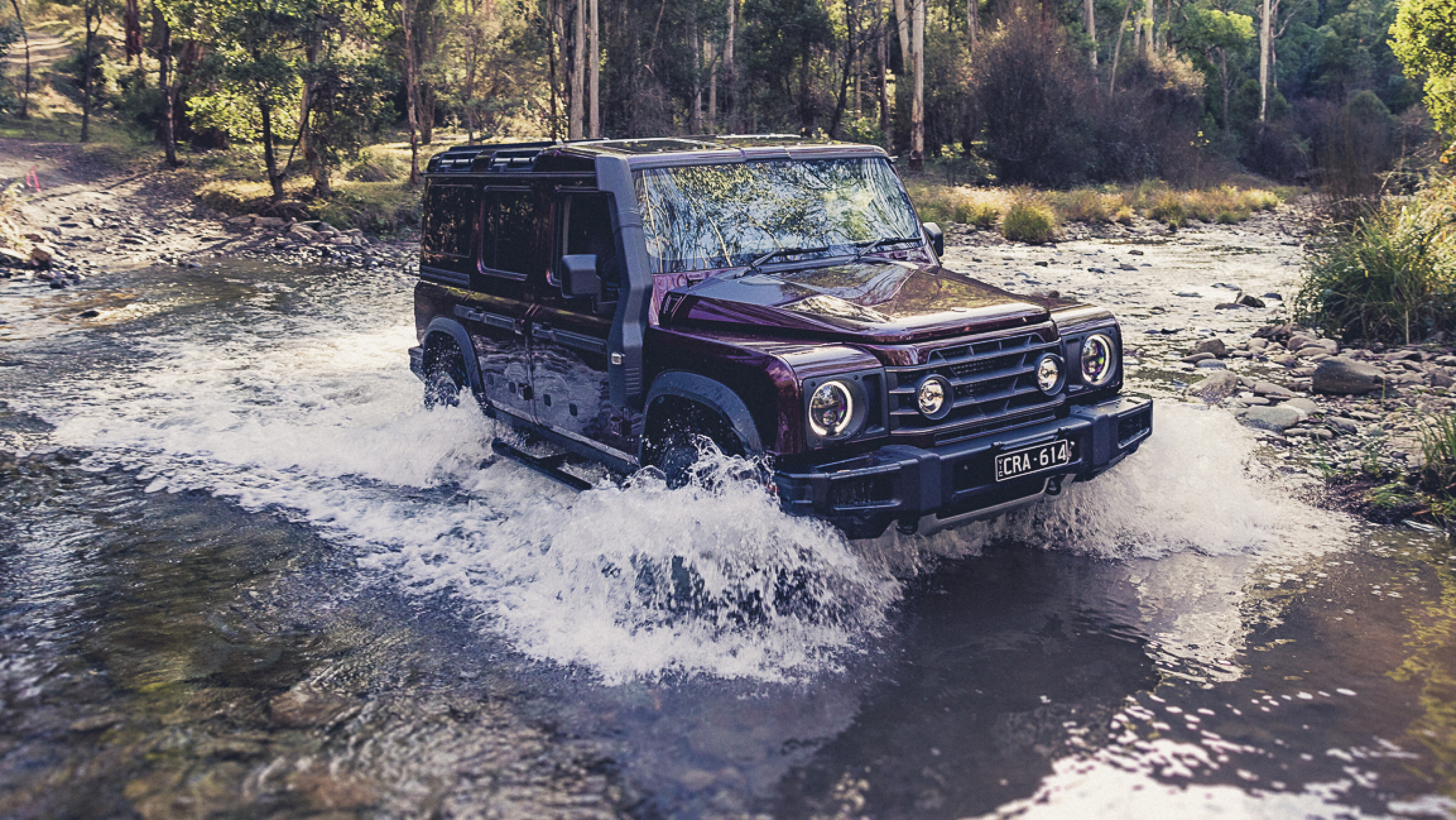
Things we like
- Great drivetrain
- Solid construction
- Off-road ability out of the box
Not so much
- Small luggage space
- Poor ergonomics and functionality
- ESP intervention on corrugations
It’s been six months since INEOS Automotive launched in Australia with its Grenadier wagon, and judging by the number of them we see on Melbourne streets, the new off-roader has been a hit.
More accurately, INEOS tells us it is selling around 80 to 100 Grenadiers a month, with the total sold in Australia approaching 1500 as of the end of June 2024. The Quartermaster double-cab ute version of the Grenadier will arrive shortly as well, and this model will accelerate the sales growth for INEOS in Australia.
With the brand focusing on getting all of the available new Grenadiers out to owners, we haven’t been able to get back behind the wheel of one since the vehicle’s initial launch in 2023, so we were excited when we received a call and were advised we could finally grab a shiny new one to take away for a few days.
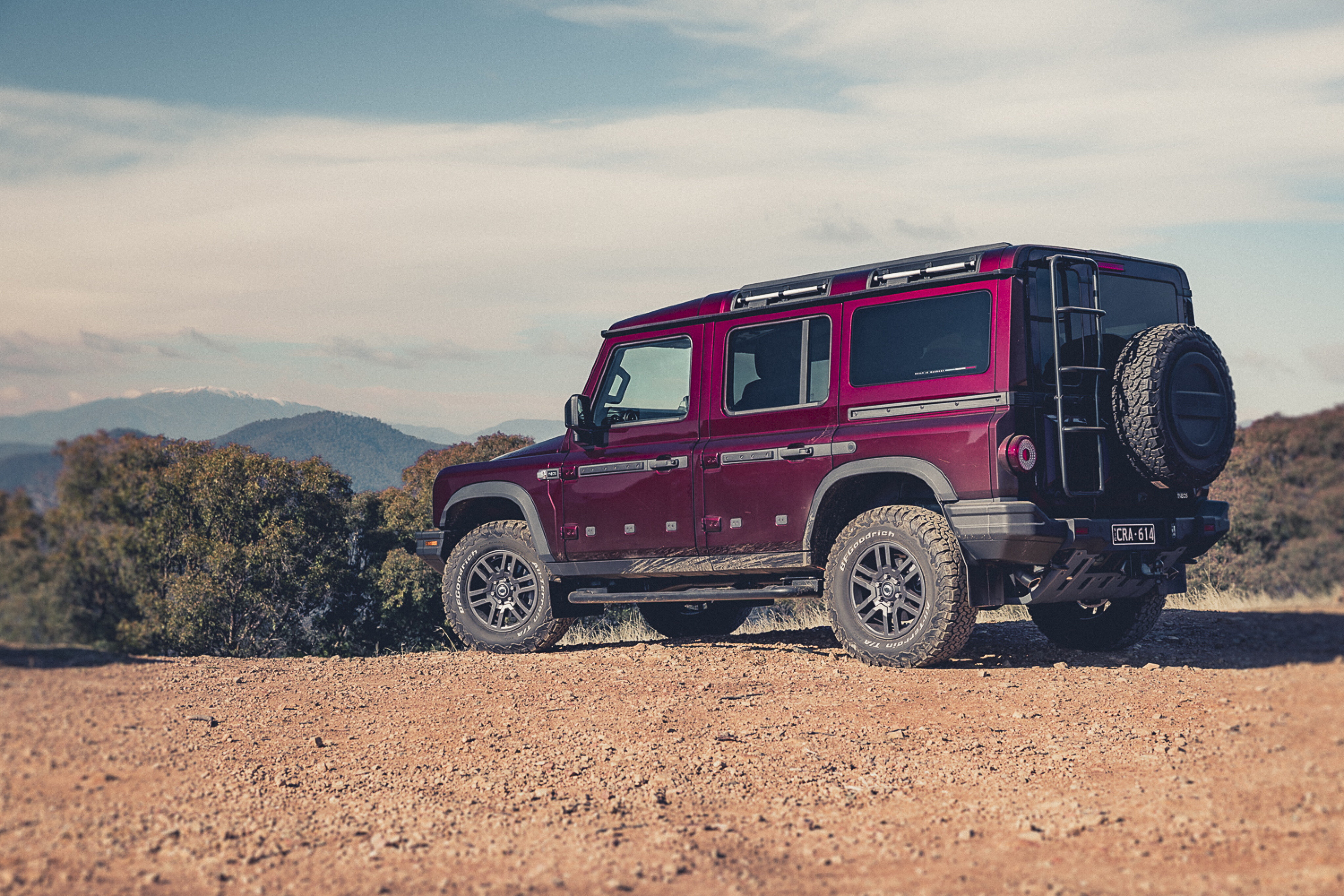
The test vehicle is a Grenadier Fieldmaster edition, which sits atop the three-model range. This example is powered by a BMW diesel engine, but there is also a BMW petrol engine available in all models.
As well as its high-end appointments, this Fieldmaster comes loaded with a few extras to make it more appealing to the off-road adventurer. These include front and rear locking differentials, a raised air intake snorkel, rear ladder, dual-battery system, 18-inch alloys wearing BFGoodrich KO2 All-Terrains, and a factory option winch. This kit takes the price as tested to $140,315 plus ORC, up from the $123 base price.

JUMP AHEAD
Sizing up
Wanting to make the most of our time with the Grenadier, we planned an overnight trip. When we started loading our gear inside, the size of the vehicle became apparent.
The Grenadier is not as big overall as a Nissan Patrol or LandCruiser 300, and you notice that in the cabin. The driver’s space is cramped by comparison, and this is not helped by the limited space for your left foot that forces you to drive with your leg bent rather than extended. In fact, the driver’s space in most double-cab utes is bigger.
While the driver’s space isn’t a huge problem, and I quickly adapted to it, the small rear cargo space is. A pair of swags takes up the full floor space in the cargo area, and for this short trip we had to stack stuff on top of these. Thankfully the floor has adjustable tie-down points to secure the gear in the back.
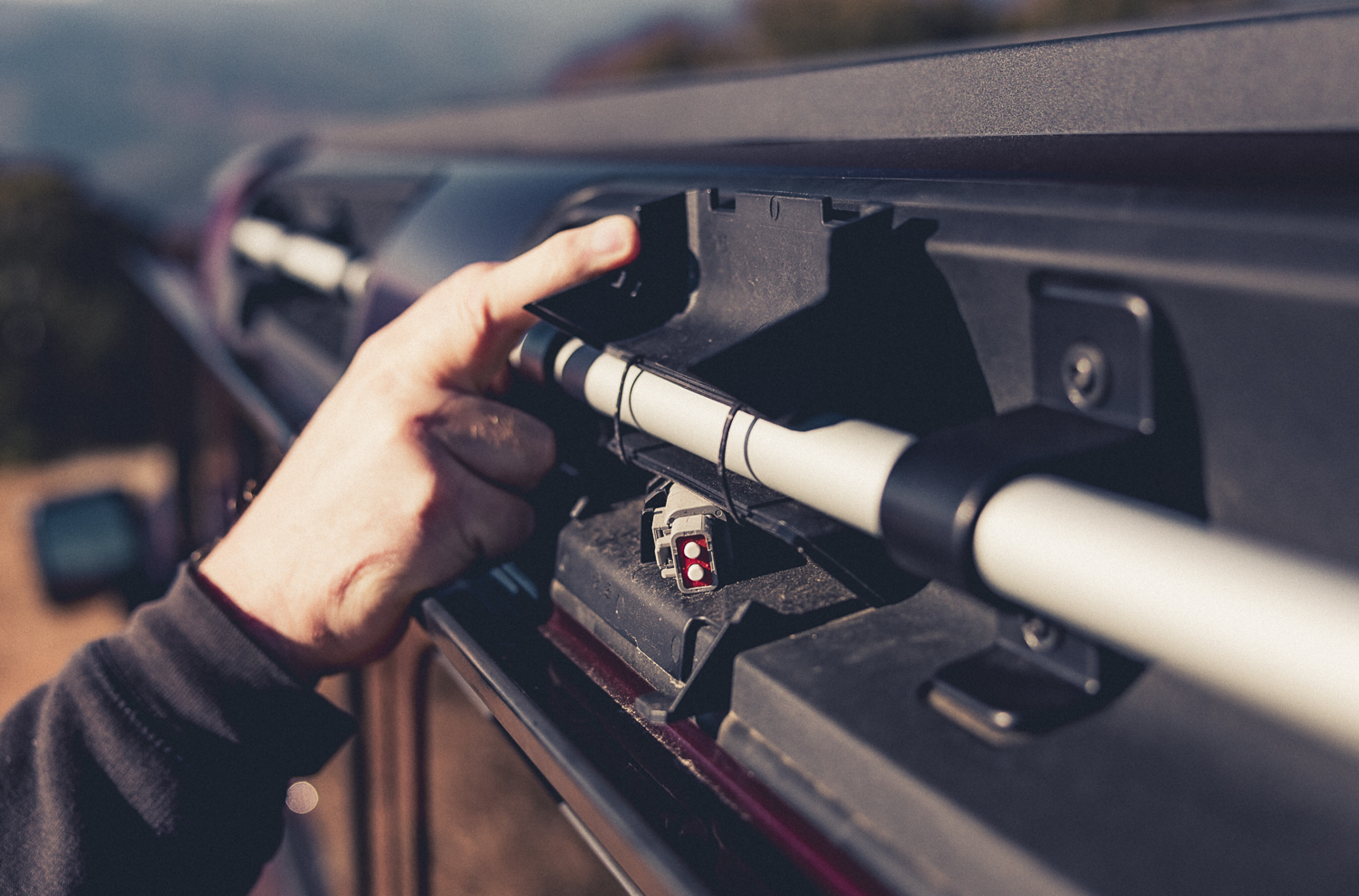
A roof rack would be handy on the Grenadier and INEOS offers an optional Rhino-Rack platform, but none were fitted to this test vehicle.
The rear seat is good for adults in the outboard positions, but the centre-seat passenger has to contend with the hump in the floor for the drivetrain. The Grenadier certainly wouldn’t be comfortable for a fifth occupant on a long drive.
Standard equipment on the Fieldmaster includes front safari removable skylights, heated front seats, leather trim, premium sound system, and carpet floor mats over the vinyl-covered floors. Interestingly for a vehicle at this spec and price, the front seats don’t have power adjustment, which might not be a problem for most drivers but could be for those who share their vehicle with another driver and regularly need to adjust the seat position.
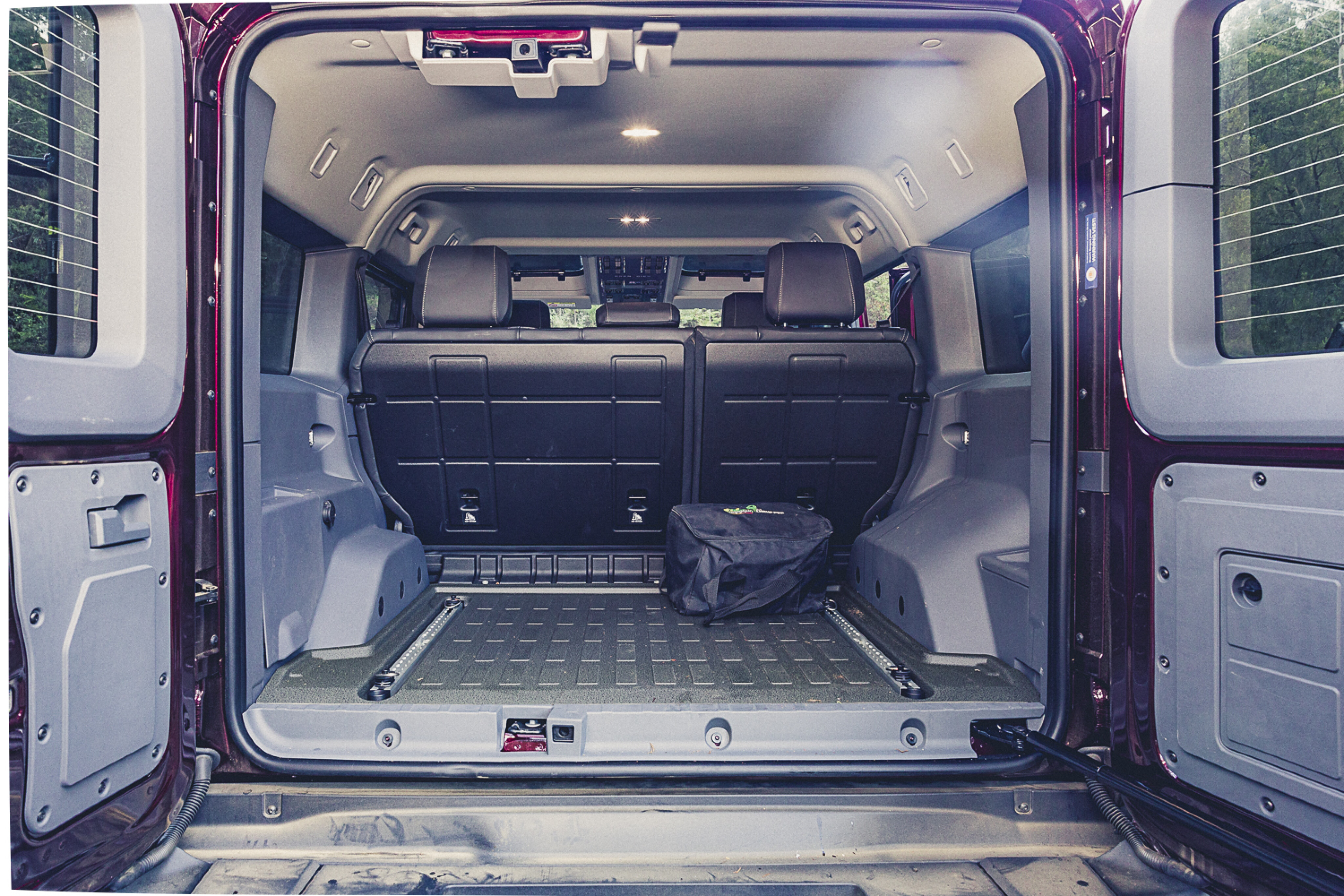
The MY25 Fieldmaster will get a higher-spec sound system that includes a subwoofer under the rear seat. Unfortunately, this will sit where the factory option second battery is currently situated, ruling out that option for MY25 Fieldmasters.
While the seating position is easy to get used to, the plethora of switches and dials takes a bit longer to get familiar with. I’m usually the first to complain when car makers get rid of buttons and knobs and put all the controls within the multimedia screen, where you have to go looking for them, but INEOS has gone to town with knobs and dials to such an extent that it takes some time to find the ones you are looking for.
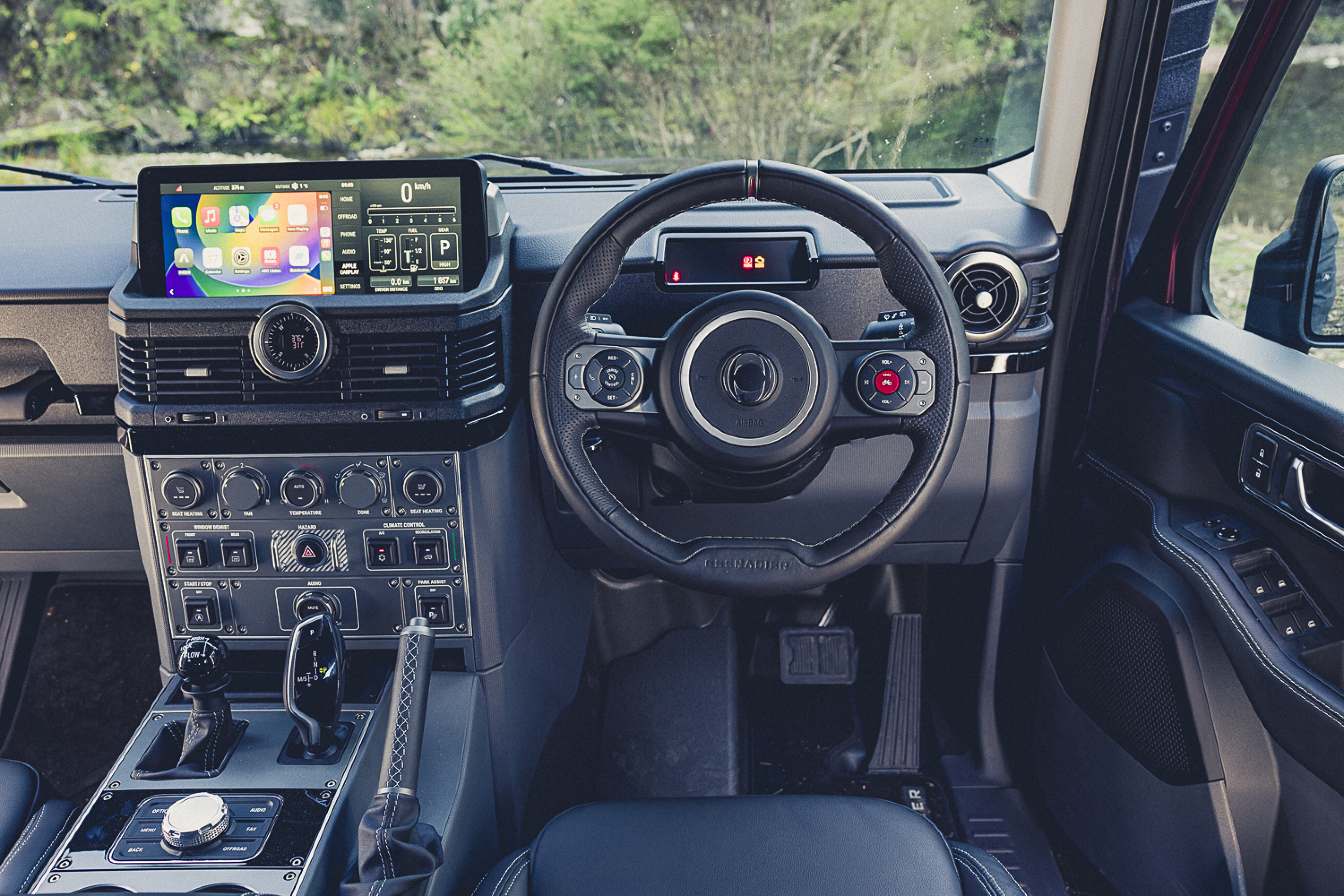
The centre stack of the dash contains all your regular HVAC and audio controls, while most of the controls for off-road functions are situated overhead.
Having said that, some of the controls in the centre are situated quite low where they are hard to see from the driver’s seat; these are easier to operate at night when they are illuminated, and I’m sure their locations would become second-nature with more time behind the wheel.
The Grenadier has a 12.3-inch touchscreen in the centre of the dash and it has wireless phone mirroring for Apple and Android users, but no inbuilt mapping. This is also home to the digital speedometer, TPMS screen and other gauge functions you would normally expect to find behind the steering wheel.
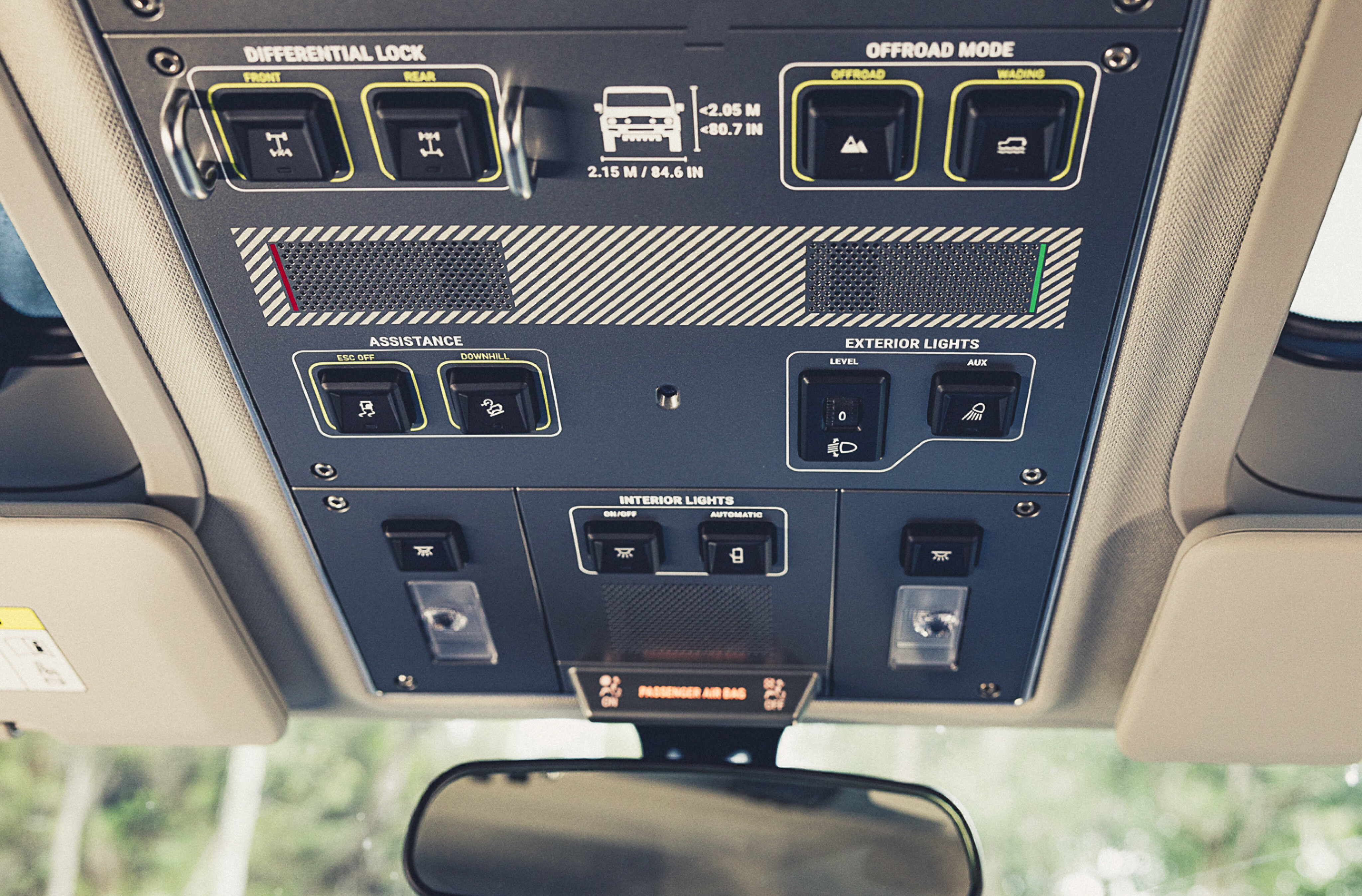
This is one thing I couldn’t get used to and personally would prefer them to be situated behind the tiller where they should be.
The screen is wide but narrow, and it can be difficult to read maps on the screen or to even clearly see the image from the reversing camera.
On our test vehicle the roof buttons included the controls for the winch, driving lights and diff locks. Some of the switches are rated to 50A for heavy load items such as the Red Winch, while others are 25A rated for lighter loads.
Conveniently, the roof is pre-wired for mounting lights up top, with four Deutsch plugs ready to go where the lashing rails are on both sides.
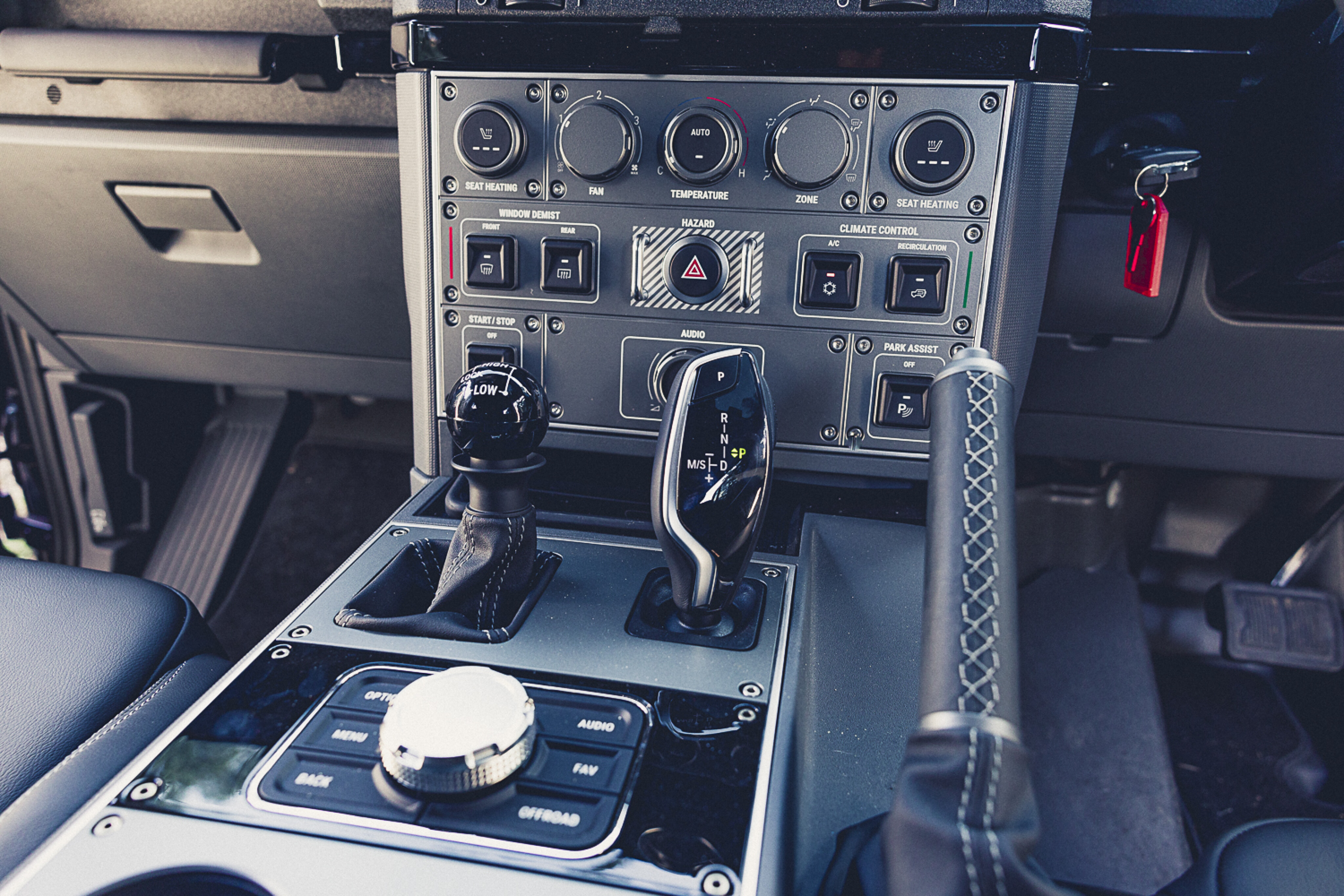
Drive time
Once you find your preferred position in the driver’s seat, the Grenadier becomes a comfortable touring vehicle.
The Recaro-branded front seats are supportive; although, the bolstering on the seat squab does take a little lift to get over on ingress and egress, which can cause you to bump your head, but you soon get used to the technique required. The heating on the Fieldmaster’s front seats was certainly appreciated on our winter alpine drive.
The steering wheel feels small, but again you get used to it and the extra turns required to steer around corners. The turning circle is wide and is another thing to get used to if you’re not accustomed to driving a vehicle with a live axle up front and an old-school steering box rather than a modern rack.

The view through the tall, flat windscreen is good and the short bonnet is easy to see over.
Visibility out the back is not so good with the vertically split tailgate, and the relatively small dash screen doesn’t help much when reversing. The exterior rear view mirrors are your friends here, but they are likewise on the small side. A set of aftermarket towing mirrors would be a welcome addition.
I usually like a sunroof for the extra light it lets into the cabin, but I’m not a fan of the Fieldmaster’s safari windows, which, being ahead of the driver, often let the sun hit you directly in the face.
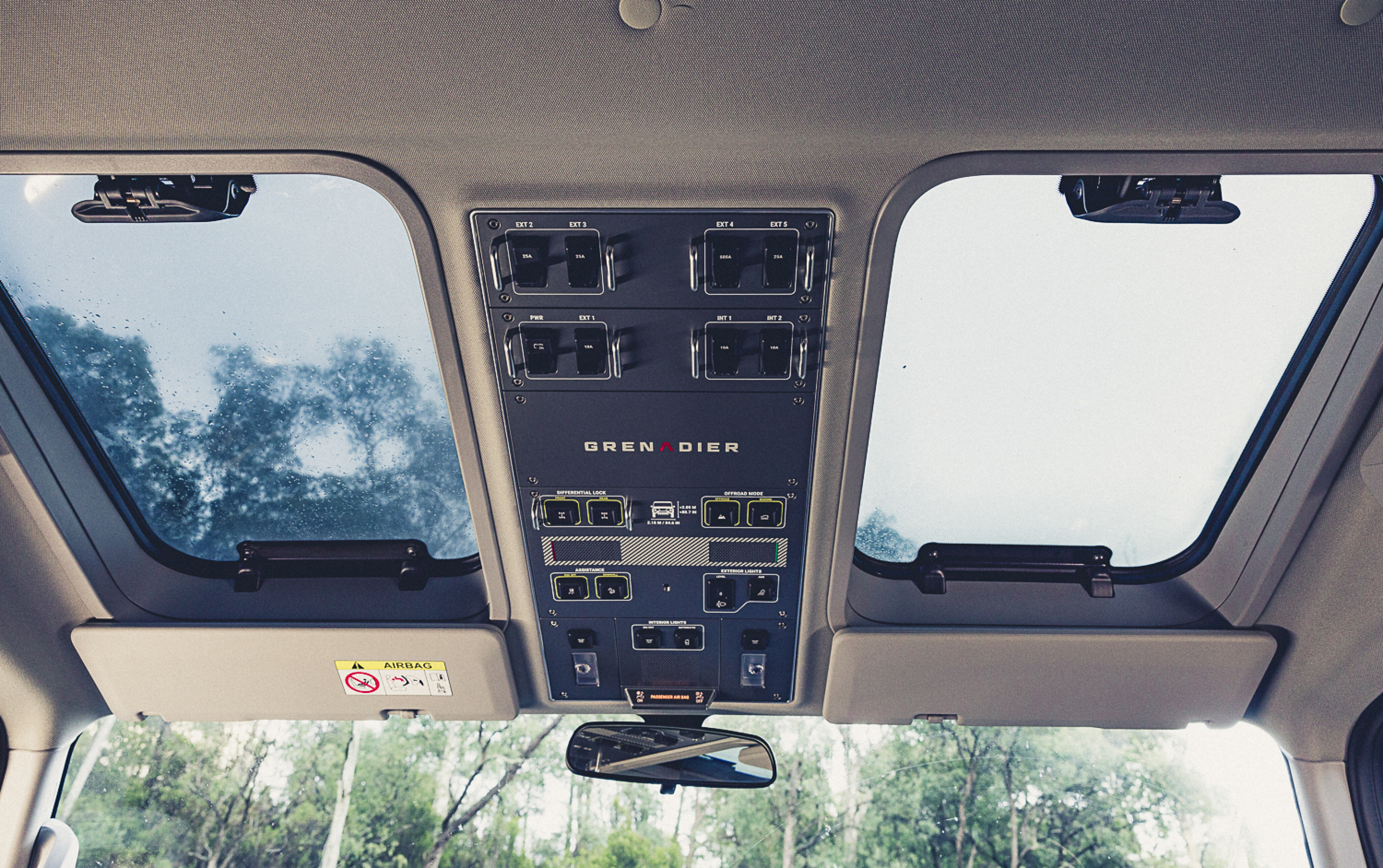
The Grenadier tours smoothly and easily on the highway, with a slight whine from the full-time 4x4 drivetrain and murmur from the BFG all terrains.
The eight-speed ZF transmission works its way smoothly through its ratios, allowing the BMW diesel engine to amble along efficiently, with just a squeeze of the long throttle pedal needed to get it to kick back a few cogs for overtaking. Manual gear selection is via a separate gate to the side on the shifter and is easy to use.
Despite its blocky, Lego-like appearance, the Grenadier was indicating fuel consumption in the low 7L/100km region at 110km/h on the highway. This no doubt helped us achieve our average 11.1L/100km of diesel use over the days ahead, climbing in the hills and using low range.

Once you leave the blacktop and hit the gravel you feel that the Grenadier is firmly sprung and well damped on its all-coil suspension; it’s firm but not uncomfortably so, and well controlled on twisty roads.
The ESP was a nuisance at times when accelerating out of corners with corrugations in the road surface, as it would totally cut the throttle input. I hoped the off-road mode button would kill or at least dampen this habit, but it didn’t, so you have to live with it. Instead, the off-road mode simply disables the parking sensors, auto-stop/start function and seat-belt reminders.
The wading mode has a clever function that switches off the electric cooling fan when engaged to protect the fan from damaging itself and the radiator when driving through water.
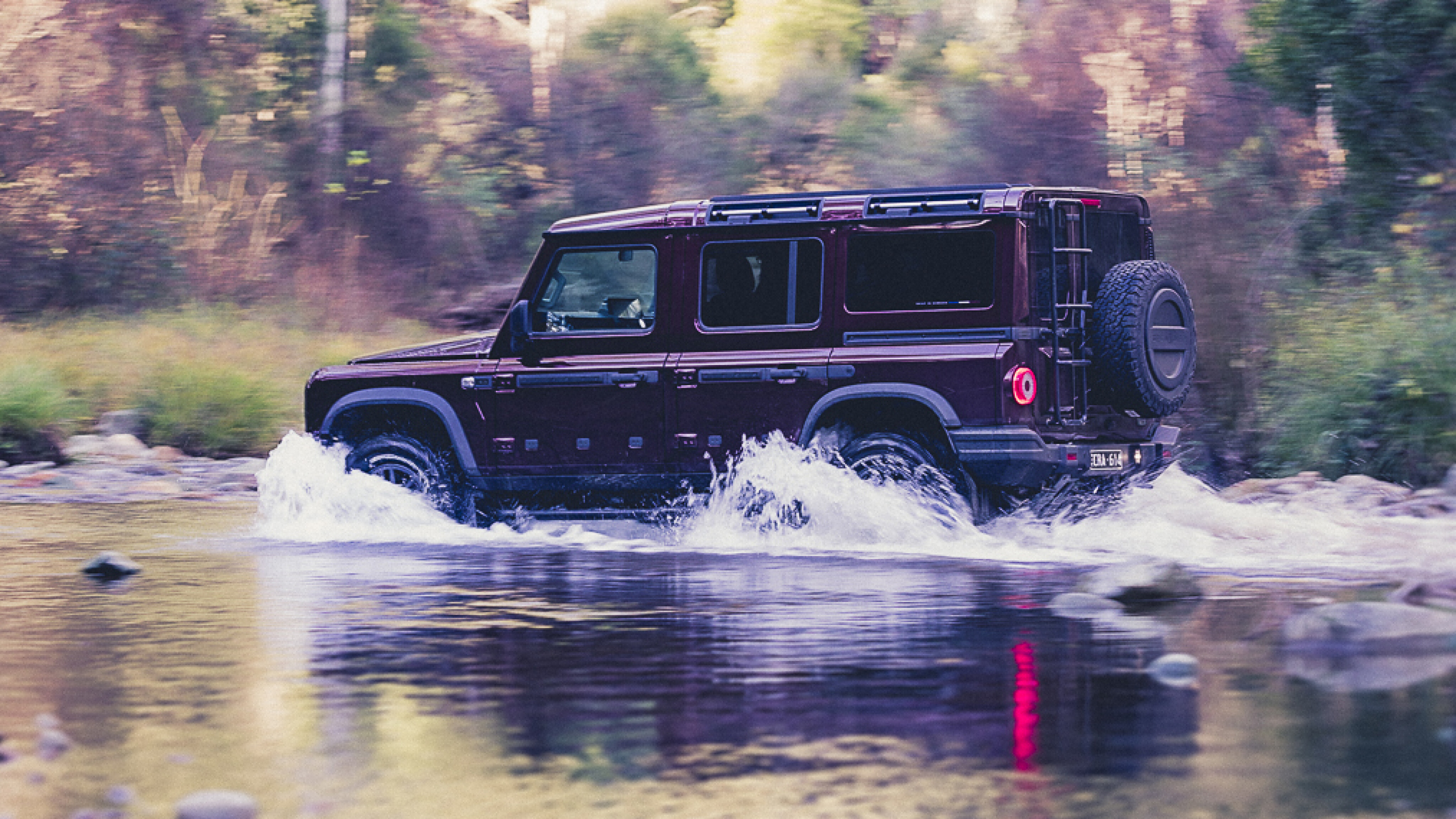
Of course, it will only turn off the fan if the engine temperature is at a safe level to allow it. Wading depth is quoted at 800mm.
While the ride feels firm at higher speeds, it is compliant at low off-road speeds. The suspension, especially at the rear, walks over ruts and mounds with plenty of travel to keep the tyres on the ground where they can do their thing.
Like any capable, live-axle, triple-locked 4x4, the Grenadier doesn’t need a menu full of off-road or terrain modes. When the going gets rough you simply shift into low range, and when it gets rougher again you start to employ the centre, rear and front locking diffs.

With tyre pressures dropped, the Grenadier is a formidable off-road vehicle.
The diffs are locked using buttons on the roof console which illuminate to show you when they have engaged and are ready for action. The status of the diff locks is also displayed on the screen in front of the driver. The diff locks themselves engage and disengage quickly and efficiently.
Like Land Rovers of old, the Grenadier’s transfer case allows you to select low range without locking the centre differential, which is handy if you are reversing a trailer up a slope or wanting the extra grunt required to pull a large boat out of the water on a sealed ramp.
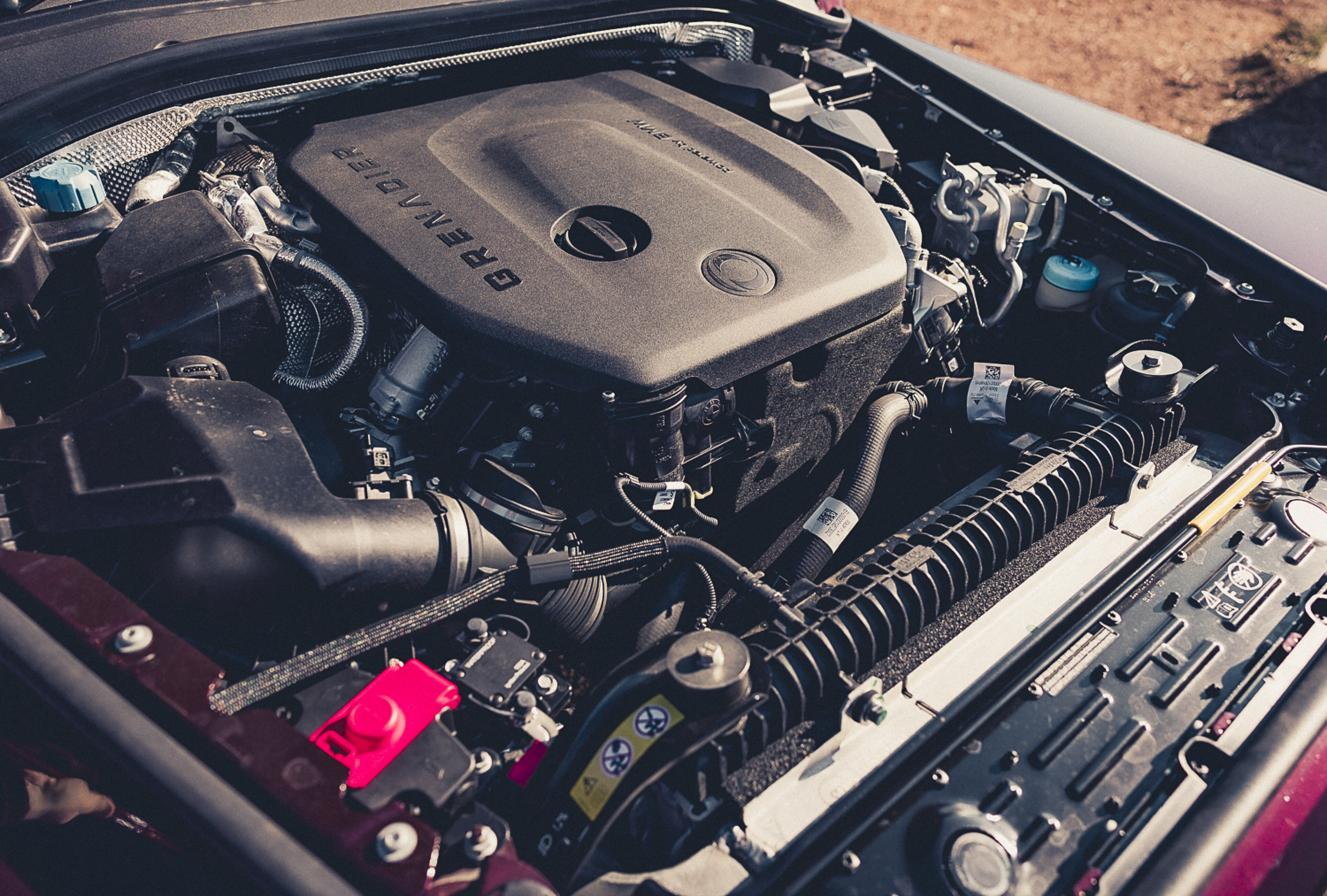
Safety
While it might not feature all of the safety equipment of many other new vehicles, the Grenadier does come with ABS, ETC, ESP and AEB; front, side and curtain airbags; lane-departure warning; TPMS; and trailer stability control.
That said, it was nice driving a vehicle on the freeway that doesn’t try to push you under the wheels of the B-double truck beside you just because you drifted too close to the white line when giving the truck some more space.
Likewise, standard cruise control over radar cruise is appreciated, but a rear cross traffic alert was missed when backing out of blind parking spaces in a country town.
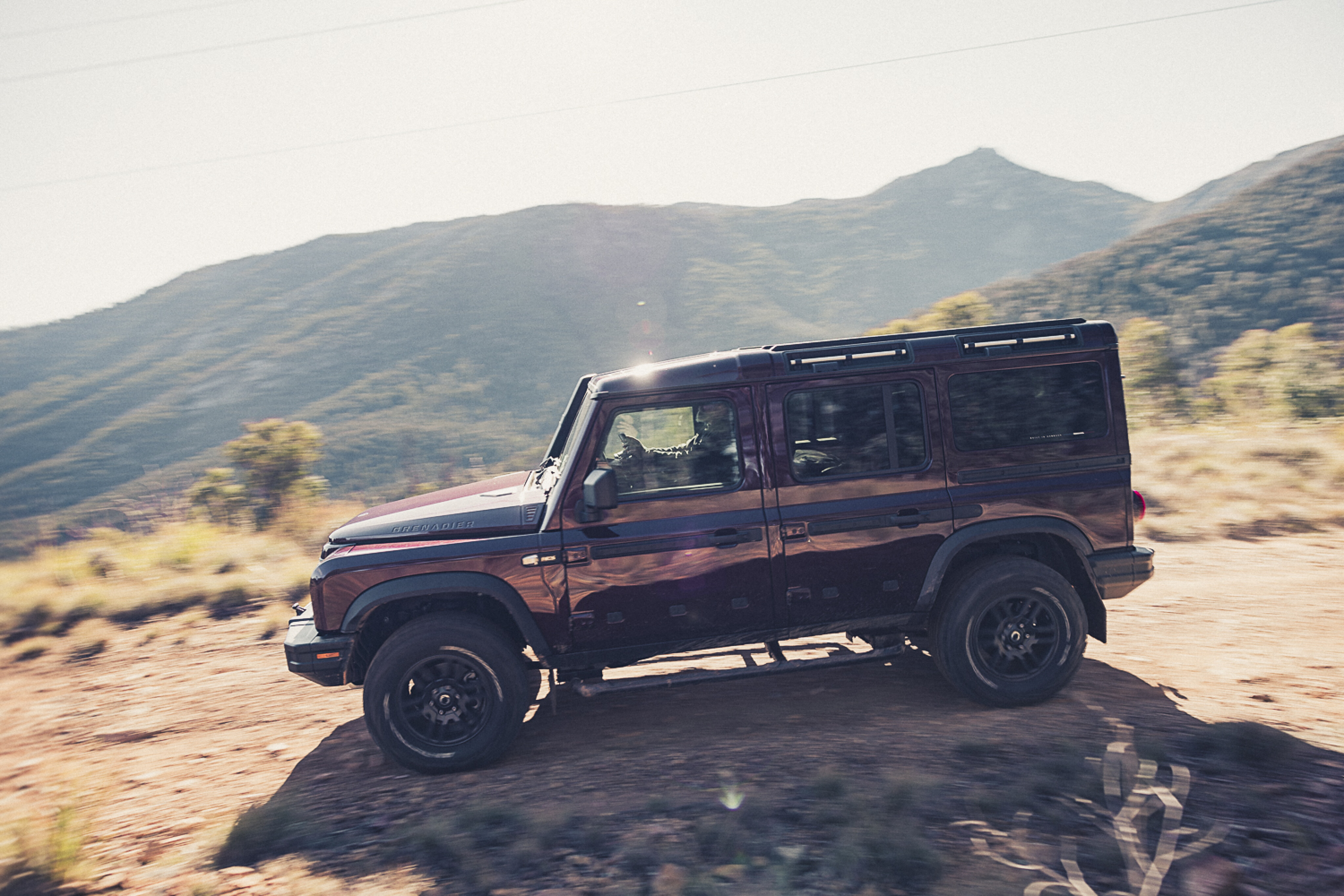
Verdict
New vehicles with genuine off-road ability and plenty of character are few and far between, so the Grenadier is a breath of fresh air for the off-road enthusiasts.
It ticks all the boxes in terms of off-road ability with plenty of cool factor thrown in, but it’s not without its compromises.
The Grenadier is not as big as many would like; think of it as a midsize wagon like a Prado or Pajero rather than a large wagon like a LandCruiser or Patrol. If that’s a problem for you, then the Quartermaster ute could be a good option.
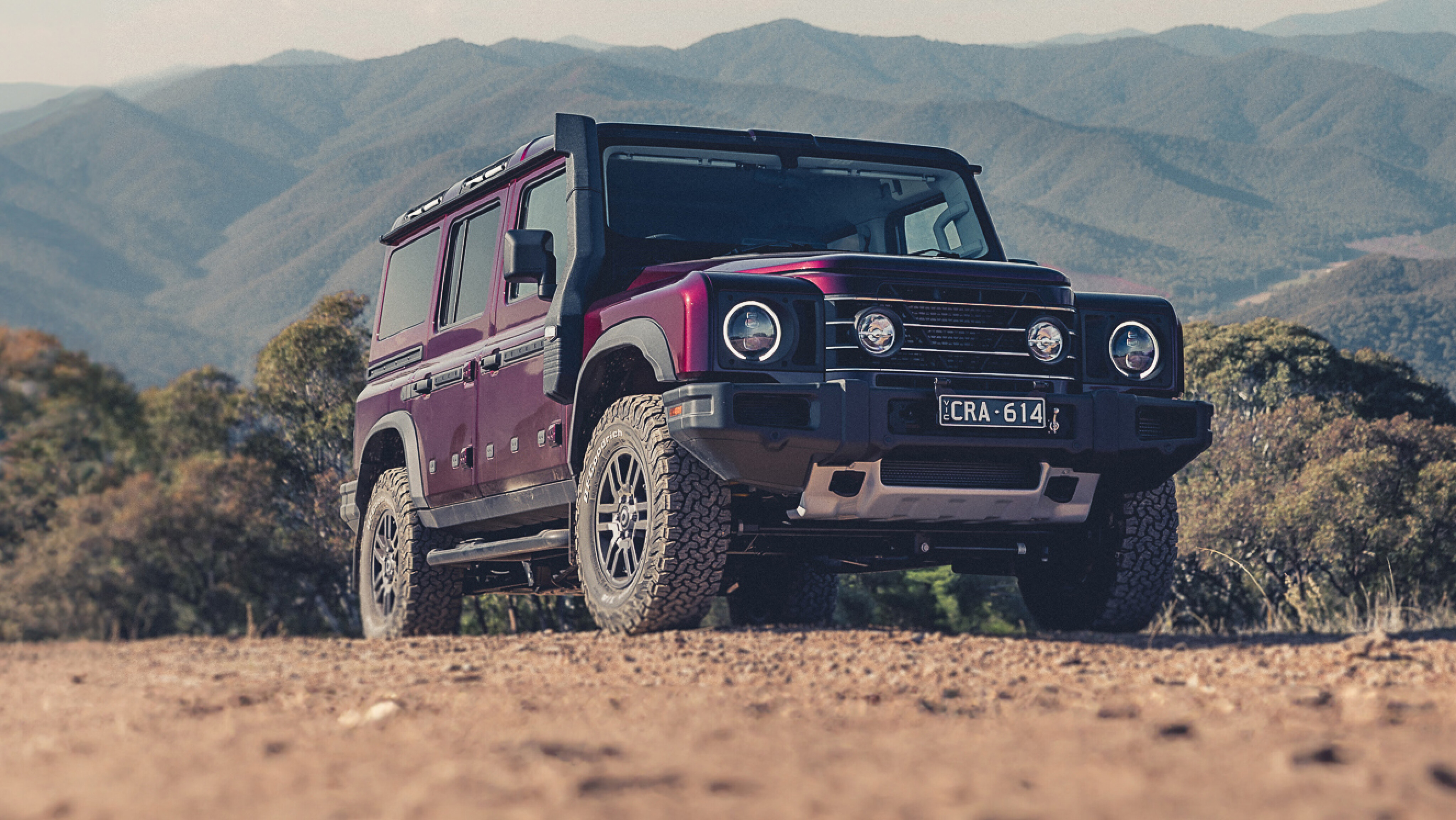
Vehicle idiosyncrasies might be cool but they can be frustrating too, and I found some of the ergonomic compromises on the Grenadier to be particularly so.
For example, I’m all for retaining an old-school key that you need to put in the ignition and turn to start the vehicle, but when the ignition is on the wrong side of the steering column and buried out of sight it’s a pain in the backside to use.
The Grenadier’s biggest problem is that it was created by a team that wanted to build a Land Rover Defender. You would think that by starting with a clean sheet they might have strayed further from the British icon but, even though they addressed many of the Defender’s foibles, there are still plenty of compromises in the Grenadier.
But hey, these are character building, right?
| 2024 Ineos Grenadier Fieldmaster specifications | |
|---|---|
| Price | $123,000+ORC |
| Engine | I6, bi-turbo diesel |
| Capacity | 2993cc |
| Max power | 183kW@3250-4200rpm |
| Max torque | 550Nm@1250-3000rpm |
| Transmission | 8-speed automatic |
| 4x4 system | Full-time/dual range |
| Crawl ratio | 56.37:1 |
| Construction | 5-door wagon body on ladder chassis |
| Front suspension | 5-link live axle on coil springs |
| Rear suspension | 5-link live axle on coil springs |
| Tyres | 255/70R18 AT |
| Kerb weight | 2718kg |
| GVM | 3550kg |
| GCM | 7000kg |
| Towing capacity | 3500kg |
| Payload | 833kg |
| Seats | 5 |
| Fuel tank | 90L (17L Adblue tank) |
| ADR fuel consumption | 10.5L/100km |
| On test fuel consumption | 11.1L/100km |
| Approach angle | 36.2° |
| Ramp over angle | 28.2° |
| Departure angle | 36.1° |
| Ground clearance | 264mm |
| Wading depth | 800mm |
Things we like
- Great drivetrain
- Solid construction
- Off-road ability out of the box
Not so much
- Small luggage space
- Poor ergonomics and functionality
- ESP intervention on corrugations



COMMENTS